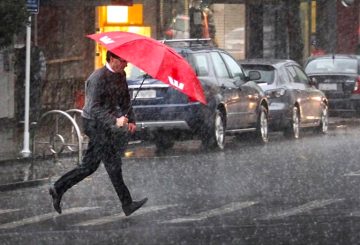Trường hợp cúm gia cầm đầu tiên có thể lây lan từ động vật sang người đã làm dấy lên lo ngại ở New Zealand. Các nhà khoa học lo ngại về sự lây lan và tiến hóa của bệnh cúm gia cầm H5N1, đã giết chết hàng triệu con gia cầm trong bốn năm qua và đã được tìm thấy ở hai chục quốc gia. Virus, lần đầu tiên nhảy từ chim hoang dã sang gia súc ở Mỹ, hiện được cho là đã lây lan từ gia súc sang một công nhân trang trại bò sữa. Đây là trường hợp nghi ngờ đầu tiên thuộc loại này.
Trong khi Tổ chức Y tế Thế giới hiện coi nguy cơ đối với con người là thấp, nhà khoa học trưởng của tổ chức này đã bày tỏ lo ngại rằng virus cuối cùng có thể phát triển để lây lan giữa mọi người. Chưa có bằng chứng nào cho thấy điều này xảy ra, nhưng trong số hàng trăm người được biết là đã nhiễm virus từ chim, hơn 50% đã chết.
Tại New Zealand, các quan chức đã chuẩn bị một kế hoạch dự phòng quốc gia. Giáo sư Michael Baker từ Đại học Otago nói rằng cúm là “mối đe dọa số một” đối với đại dịch toàn cầu. Ông nói rằng chủng H5N1 đã tồn tại trong một thời gian dài và đã gây ra một trong những sự kiện bệnh động vật lớn nhất từng được ghi nhận.
Baker tự tin rằng New Zealand đã học được rất nhiều từ vài năm qua về cách giải quyết hiệu quả đại dịch cúm ở người. Ông nói rằng một loại vắc-xin có thể được phát triển tương đối nhanh chóng; Hoa Kỳ đã dự trữ 10 triệu liều vắc-xin nhắm vào các chủng tương tự như được tìm thấy ở công nhân nông trại.
Tuy nhiên, Tiến sĩ Richard Webby, một nhà nghiên cứu bệnh truyền nhiễm có trụ sở tại Mỹ, bày tỏ lo ngại rằng thế giới có thể bị mất cảnh giác một lần nữa. Ông nói rằng không có đủ nguồn lực được đưa vào việc chuẩn bị cho đại dịch, đây là một vấn đề toàn cầu. Ông cũng lưu ý rằng các cơ quan y tế công cộng trên toàn thế giới thiếu khả năng chẩn đoán virus ở khắp mọi nơi.
Đối với ngành công nghiệp sữa của New Zealand, rủi ro hiện tại được coi là thấp. Tiến sĩ Webby nói rằng các ca nhiễm trùng ở Mỹ là lần đầu tiên được thấy ở gia súc trong hơn 25 năm theo dõi virus.





























































